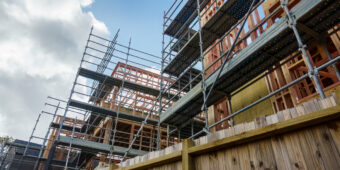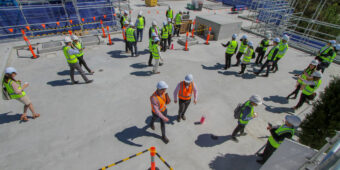STAY COOL, STAY SAFE
23 Jan 2019, Learn, Prove Your Know How, Safety

Summer is in full swing and it’s a great time to get cracking on lots of jobs, but it can present extra health and safety risks. Heat exhaustion, fatigue and dehydration are all things to watch out for when working in the heat
Site Safe’s central regional manager Jeff Strampel says knowing the danger signs is vital when working in the heat.
“If heat stress or exhaustion is not dealt with quickly, it can progress to heat stroke, which can be life-threatening,” says Strampel.
“Unfortunately, New Zealand has one of the highest melanoma rates in the world. Kiwis need to know that exposure to our harsh UV rays can lead to melanoma or other skin cancers.”
“It can be tempting to take on too much work, especially if you’ve been waiting for good weather to get started on a job – but just remember to take a step back and think about the task before you get stuck in,” says Strampel.
“Smart planning makes the job safer.”
Be careful when doing these types of work, which make you more likely to suffer heat exhaustion:
- Working in the direct sun
- Working near heat-producing processes
- Working in confined spaces
- Doing underfloor, ceiling or roof work
- In cabs of mobile plant
- Closed areas with limited airflow
Danger signs
Make sure you know the danger signs to look out for when working in the heat. If you do overheat, you’ll notice symptoms like:
- Clammy or sweaty skin
- Feeling weak or dizzy
- Dark-coloured urine
- Pounding or rapid pulse
- Loss of balance
- Headaches
- Muscle cramps
- Mood changes or confusion
Tips for staying safe
- Tool up: use the right tools for the job and try to switch tasks regularly if using vibrating power tools. Consider low-vibration hand-held tools and, where practical, install low-vibration seats in machinery; whole-body vibration can cause fatigue, headaches and loss of balance. Rotate tasks between workers and make sure workloads and deadlines are realistic.
- Be cool: wear lightweight, breathable clothing if it’s safe to do so, but be sure to comply with your company’s clothing and PPE regulations. Remember to wear a hat, safety sunglasses and good quality sunblock. With any sunglasses, always check the impact and UV rating.
- Don’t sweat it: stay hydrated with lots of water. Avoid dehydrating drinks containing caffeine or alcohol. People need about eight glasses of water per day, but if you’re working in the heat, it’s likely you will need more.
- Go with the flow: think about airflow and use fans to provide ventilation and keep the temperature down if necessary.
- Be the man/woman with the plan: if you have several jobs to do outside, think about where the sun is and which jobs you might be able to do first to avoid being in full sun for too long.
- Take a break: if possible, consider taking a break and heading inside during the hottest part of the day. Have regular breaks and consider extra breaks if the work is demanding. Monitor and place limits around overtime and avoid incentives to work too many hours. If you need to work longer hours, consider staggered start and finish times, and longer breaks and periods off work. Try to set realistic deadlines and timeframes for jobs.
For more free health and safety information, check out Site Safe’s website www.sitesafe.org.nz
Site Safe is a not-for-profit, membership-based organisation that promotes, inspires and supports a culture of health and safety in New Zealand construction.
Register to earn LBP Points Sign in
1 Comment
Leave a Reply
You must be logged in to post a comment.




done